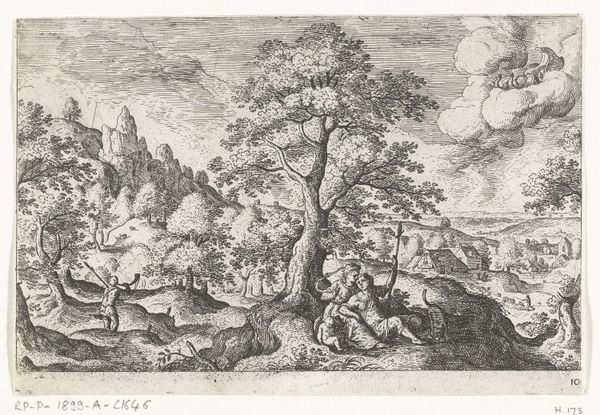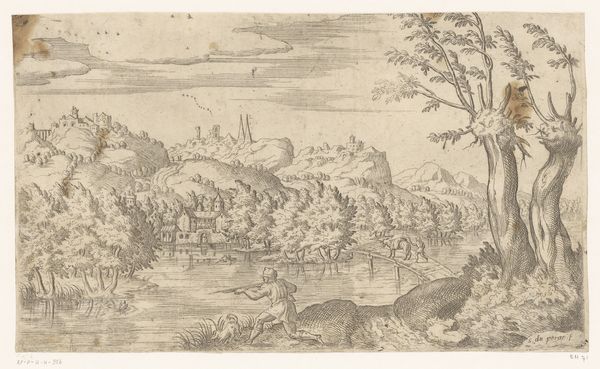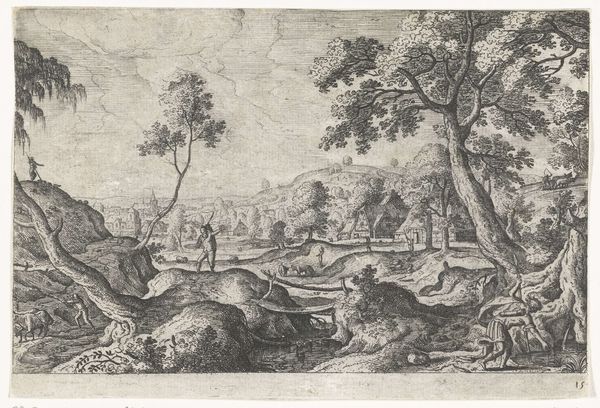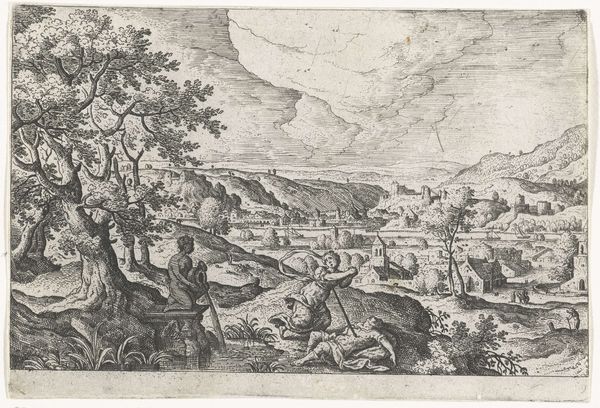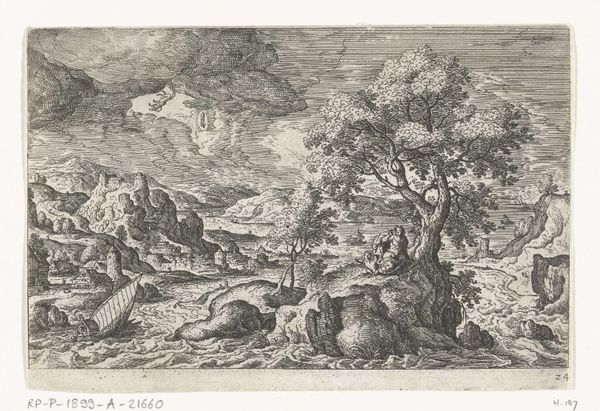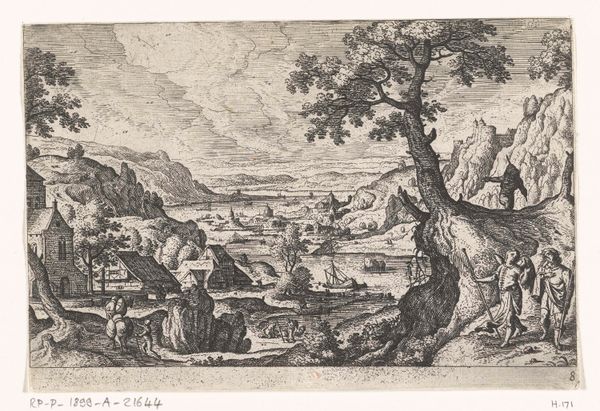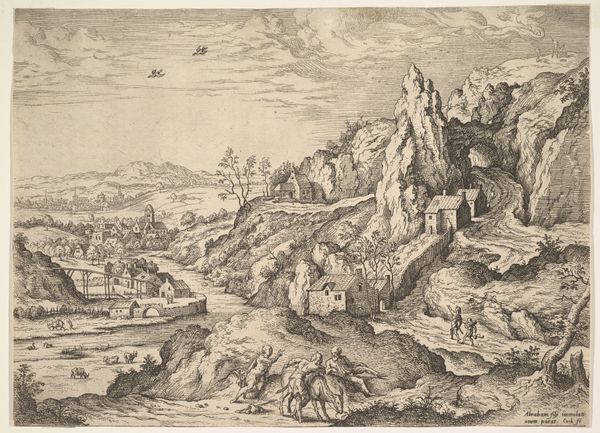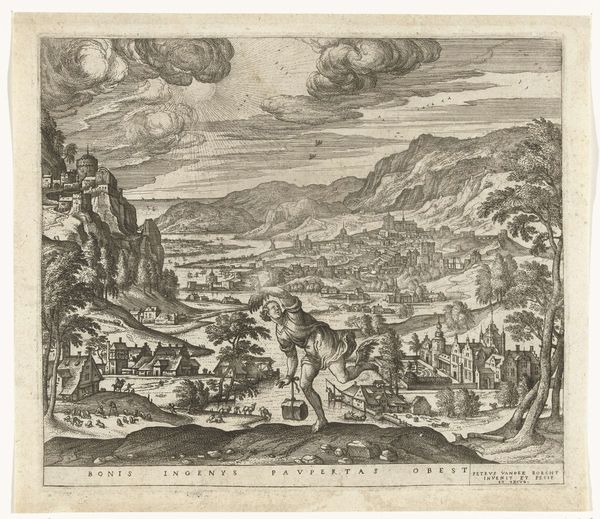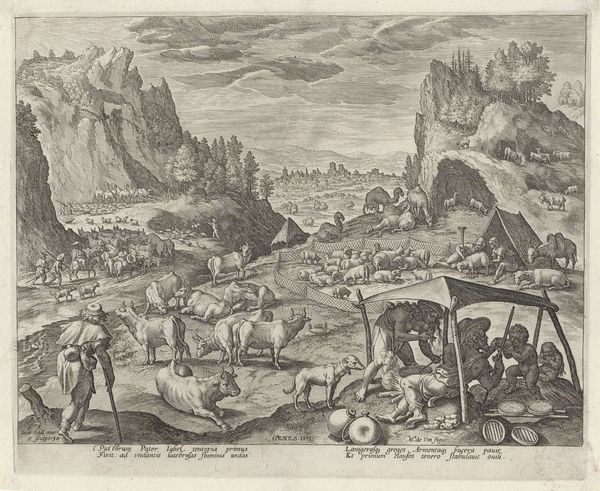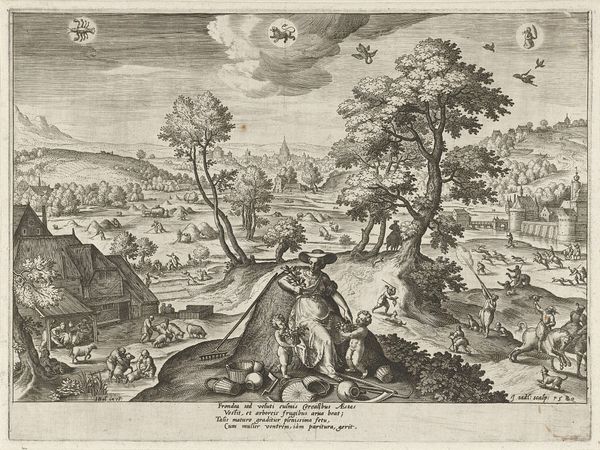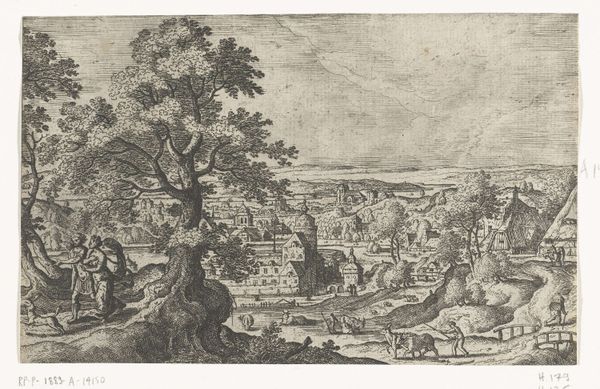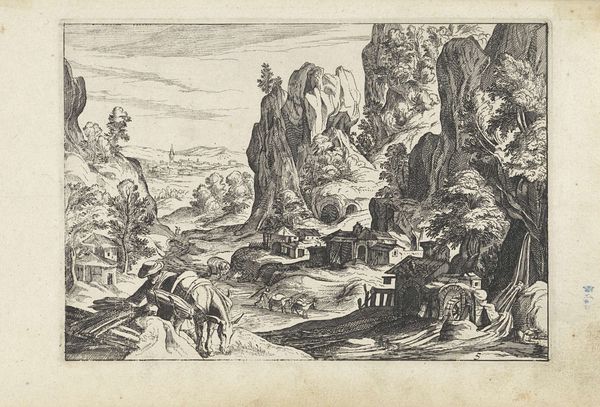
drawing, ink, engraving
#
drawing
#
ink drawing
#
pen drawing
#
landscape
#
mannerism
#
ink
#
genre-painting
#
engraving
Dimensions: width 189 mm, height 129 mm
Copyright: Rijks Museum: Open Domain
Editor: So, this is "Landschap met twee ruiters" - Landscape with Two Riders - an ink drawing by Pieter van der Borcht the Elder, created sometime between 1545 and 1608. It feels incredibly detailed for its small size, almost like a little world unfolding. What strikes you when you look at it? Curator: It's fascinating how this landscape serves almost as a stage. These genre scenes were quite popular; it invited viewers to project their own narratives. Have you noticed the positioning of the riders in relation to the town? Editor: Yes! One seems to be riding towards the town, while the other is heading...elsewhere? It does create a sense of journey, maybe even an allegory. Is that intentional? Curator: I think so. Consider the period; the late 16th century saw increased urbanization and shifts in power. Landscape art offered a space to negotiate those changes. These weren’t simply picturesque scenes, but statements. Look how the fortified tower hints at social stratification of the time. How do you feel that reading alters the artwork’s presence for you? Editor: It really makes me reconsider the riders' roles, not just as figures in a landscape but as active participants in this changing world. They could represent merchants, messengers, even soldiers – each with a different stake in the town's fate. I see the landscape genre as something complex and purposeful. Curator: Precisely! The intersection between landscape, social status, and political symbolism is what I find compelling in pieces like these. It encourages us to dig beneath the surface of what appears merely scenic. Editor: Absolutely. I'm definitely going to be paying more attention to those background details from now on, recognizing that what is rendered might say a lot about the intention and background! Thanks for opening my eyes to the landscape’s context!
Comments
No comments
Be the first to comment and join the conversation on the ultimate creative platform.
